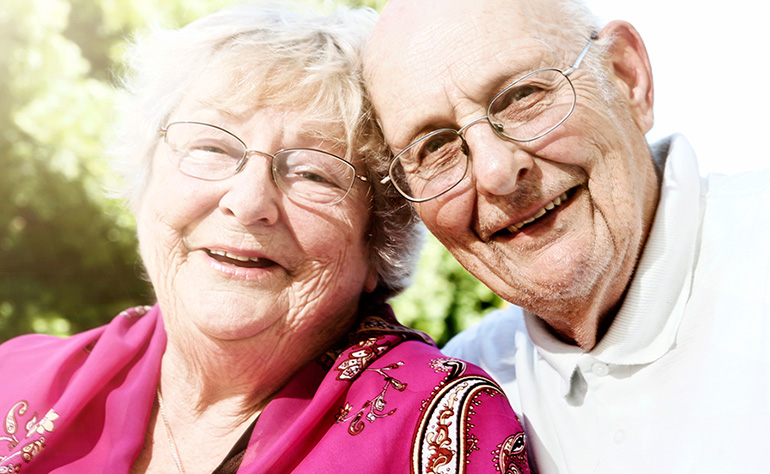How your skin changes with age

What you need to know about common skin conditions affecting seniors
As we get older, our skin changes: it looks and feels different, it’s more sensitive, and it’s more vulnerable to injury. Understanding these changes will help you protect and care for aging skin, whether for yourself or a loved one.
Common skin conditions in seniors
- Dry, flaking skin: As we age, our oil glands and sweat glands don’t work as well, causing skin to become dry and itchy. Avoid scratching or picking at skin. To relieve discomfort and prevent cracking and bleeding, apply moisturizer regularly (avoid products that contain alcohol). It also helps to:
- wash with mild, non-soap cleansers
- take short, warm showers rather than baths or hot showers
- reduce alcohol intake
- avoid smoking
- wear loose-fitting cotton clothing rather than synthetic materials
- use a humidifier, especially in colder months when air is drier
- Itchy skin: Dryness can make skin feel itchy. Follow the tips above to avoid further dryness. Certain medications can also cause skin to itch. Talk to your physician about creams and medications that provide relief.
- Thin, fragile skin: Many seniors have thinner, nearly translucent skin. Sun exposure, aging, genetics and long-term use of certain medications can contribute to thinner skin. To avoid injury, protect skin from the sun, moisturize and wear long sleeves and pants. In the winter, cover up as much skin as possible before going outdoors; dry air and cold winds can make skin vulnerable to injury.
- Bruising: As we get older, our skin loses elasticity and our blood vessels become more fragile. This makes us more prone to bruising, and it takes longer for bruises to heal. Bruising is also a side effect of anticoagulant drugs (blood thinners) and other medications. First aid for bruises: elevate the injury and apply a cold compress for 10 minutes to reduce blood flow; repeat several times over the next day or two. If the area develops painful swelling or still hurts days later, see your doctor.
- Slower healing: You may notice that healing from cuts and scratches takes longer than it used to. Certain health conditions, such as diabetes, high blood pressure and autoimmune diseases, can also slow down healing.
- Pressure ulcers (bedsores): These skin wounds, which usually appear on bony body parts (elbows, tailbone, hips, ankles, heels), are caused by prolonged pressure, such as lying in a bed or sitting in a chair in one position for too long. People who have mobility challenges or diabetes are especially vulnerable. Use a soft mattress or seat cushion and change position every few hours. Watch for severe redness in the skin – this is a sign that a sore is developing and needs medical attention. Treating bedsores quickly is important because they can lead to infections or may not heal properly.
- Age spots: Also called liver spots, these are small, darkened areas that appear on the skin over time. They typically occur in areas exposed to the sun, such as the hands, shoulders, arms and face. Age spots aren’t harmful; however, if you’re concerned about skin cancer, consult your doctor.
- Skin tags: These small, harmless, raised growths are common among older adults, especially women. Your doctor can remove them, if desired.
- Shingles: Shingles is a painful rash caused by varicella zoster, the virus that causes chickenpox. If you’ve ever had chicken pox, you can develop shingles. The rash usually appears on the torso but can affect any part of the body. The rash eventually develops blisters, which can take weeks to heal. Symptoms can also include dizziness, headache, light sensitivity, weakness, a change in vision or difficulty thinking. See a physician if you suspect shingles – early treatment with antiviral medication can reduce the infection’s severity and duration. Two-thirds of shingles cases happen in people over age 50. A vaccine is available; ask your doctor if it’s right for you.
- Skin cancer: Protecting skin from harmful ultraviolet (UV) rays is still important as we age. Wear sunscreen; cover up with long sleeves, pants and a hat; avoid sun exposure, especially between 11 a.m. and 3 p.m. when the sun is strongest; and check the UV Index – if it’s 3 or higher, be extra sun-safe. Avoid tanning beds, and check moles regularly for changes in size, shape and colour.
For seniors who need assistance with activities of daily living, home care professionals can provide preventative skin care, as well as foot care, personal grooming and other helpful services.
